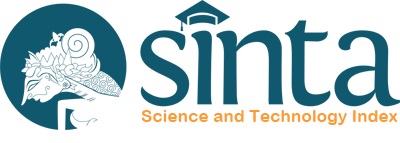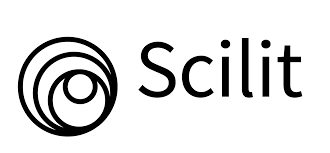Optimization of Heat Transfer Performance Using Response Surface Methodology-Central Composite Design (RSM-CCD) for Nano-Coolant (Al2O3+EG/W) in Electric Vehicle Battery
DOI:
https://doi.org/10.35814/asiimetrik.v6i1.5455Keywords:
Al2O3 nano fluid, cold plate, electric vehicle battery, RSM-CCDAbstract
The presence of electric vehicles (EVs) must be supported by batteries that have good-quality energy storage. Battery power is critical to the development of electric cars. Temperature affects battery strength, so operating within the optimum temperature range must be ensured. During the charge and discharge processes, the electrochemical reaction generates hot energy, causing an increase in battery temperature. In this research, the solution to the problem is to make a cooling system with a mini channel cold plate and Al2O3 1%vol+EG/W (50:50) nano coolant. Optimization of heat transfer enhancement using Response Surface Methodology-Central Composite Design (RSM-CCD) and experimental tests with various flow rate variations. The research findings revealed that the RSM-CCD results and the outcomes of studies employing test equipment agreed that the highest cooling fluid flow rate was the most optimal condition, the highest T2 temperature drop of 17.63% occurred at a flow rate of 1.7 LPM, and the lowest T2 temperature was 13.13% at a flow rate of 1 LPM.
Downloads
References
Abdulah, A., Sukarman, S. and Rajab, D.A. (2019) ‘Optimasi Sistem Pendingin Untuk Penggunaan Kembali Ethylene Glycol’, in Prosiding SEMNASTERA (Seminar Nasional Teknologi dan Riset Terapan). SEMNASTERA (Seminar Nasional Teknologi dan Riset Terapan), Sukabumi, Jawa Barat: Politeknik Sukabumi, pp. 73–80.
Afrand, M., Abedini, E. and Teimouri, H. (2017) ‘How the dispersion of magnesium oxide nanoparticles effects on the viscosity of water-ethylene glycol mixture: Experimental evaluation and correlation development’, Physica E: Low-dimensional Systems and Nanostructures, 87, pp. 273–280.
Al-Hallaj, S. and Selman, J.R. (2002) ‘Thermal modeling of secondary lithium batteries for electric vehicle/hybrid electric vehicle applications’, Journal of Power Sources, 110(2), pp. 341–348.
Ali, M., El-Leathy, A.M. and Al-Sofyany, Z. (2014) ‘The Effect of Nanofluid Concentration on the Cooling System of Vehicles Radiator’, Advances in Mechanical Engineering, 6, p. 962510.
Bernagozzi, M. et al. (2023) ‘Heat pipes in battery thermal management systems for electric vehicles: A critical review’, Applied Thermal Engineering, 219, p. 119495.
Chen, D. et al. (2016) ‘Comparison of different cooling methods for lithium ion battery cells’, Applied Thermal Engineering, 94, pp. 846–854.
Chiam, H.W. et al. (2017) ‘Thermal conductivity and viscosity of Al2O3 nanofluids for different based ratio of water and ethylene glycol mixture’, Experimental Thermal and Fluid Science, 81, pp. 420–429.
Choi, S.U.S. and Eastman, J.A. (1995) ‘Enhancing thermal conductivity of fluids with nanoparticles’, in Conference: Enhancing thermal conductivity of fluids with nanoparticles. 1995 International mechanical engineering congress and exhibition, San Francisco, USA: Argonne National Lab. (ANL), Argonne, IL (United States).
Deng, T. et al. (2019) ‘Thermal performance of lithium ion battery pack by using cold plate’, Applied Thermal Engineering, 160, p. 114088.
Deng, T., Zhang, G. and Ran, Y. (2018) ‘Study on thermal management of rectangular Li-ion battery with serpentine-channel cold plate’, International Journal of Heat and Mass Transfer, 125, pp. 143–152.
Elias, M.M. et al. (2014) ‘Experimental investigation on the thermo-physical properties of Al2O3 nanoparticles suspended in car radiator coolant’, International Communications in Heat and Mass Transfer, 54, pp. 48–53.
Giuliano, M.R., Prasad, A.K. and Advani, S.G. (2012) ‘Experimental study of an air-cooled thermal management system for high capacity lithium–titanate batteries’, Journal of Power Sources, 216, pp. 345–352.
Imran, A.A., Mahmoud, N.S. and Jaffal, H.M. (2018) ‘Numerical and experimental investigation of heat transfer in liquid cooling serpentine mini-channel heat sink with different new configuration models’, Thermal Science and Engineering Progress, 6, pp. 128–139.
Jaffal, H.M. et al. (2023) ‘Performance enhancement of a novel serpentine channel cooled plate used for cooling of Li-ion battery module’, International Journal of Thermal Sciences, 184, p. 107955.
Jiang, W., Zhao, J. and Rao, Z. (2021) ‘Heat transfer performance enhancement of liquid cold plate based on mini V-shaped rib for battery thermal management’, Applied Thermal Engineering, 189, p. 116729.
Liu, H., Chika, E. and Zhao, J. (2018) ‘Investigation into the effectiveness of nanofluids on the mini-channel thermal management for high power lithium ion battery’, Applied Thermal Engineering, 142, pp. 511–523.
Mahamud, R. and Park, C. (2011) ‘Reciprocating air flow for Li-ion battery thermal management to improve temperature uniformity’, Journal of Power Sources, 196(13), pp. 5685–5696.
Ouyang, T. et al. (2023) ‘Novel hybrid thermal management system for preventing Li-ion battery thermal runaway using nanofluids cooling’, International Journal of Heat and Mass Transfer, 201, p. 123652.
Pastoriza-Gallego, M.J. et al. (2011) ‘Thermal conductivity and viscosity measurements of ethylene glycol-based Al2O3 nanofluids’, Nanoscale Research Letters, 6(1), p. 221.
Sarchami, A. et al. (2022) ‘Experimental study of thermal management system for cylindrical Li-ion battery pack based on nanofluid cooling and copper sheath’, International Journal of Thermal Sciences, 171, p. 107244.
Sedeh, R.N., Abdollahi, A. and Karimipour, A. (2019) ‘Experimental investigation toward obtaining nanoparticles’ surficial interaction with basefluid components based on measuring thermal conductivity of nanofluids’, International Communications in Heat and Mass Transfer, 103, pp. 72–82.
Subhedar, D.G., Ramani, B.M. and Gupta, A. (2018) ‘Experimental investigation of heat transfer potential of Al2O3/Water-Mono Ethylene Glycol nanofluids as a car radiator coolant’, Case Studies in Thermal Engineering, 11, pp. 26–34.
Usri, N.A. et al. (2015) ‘Thermal Conductivity Enhancement of Al2O3 Nanofluid in Ethylene Glycol and Water Mixture’, Energy Procedia, 79, pp. 397–402.
Wazeer, A. et al. (2022) ‘Phase change materials for battery thermal management of electric and hybrid vehicles: A review’, Energy Nexus, 7, p. 100131.





























